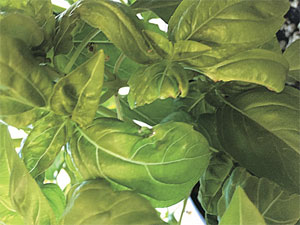- California Assembly OKs highest minimum wage in nation
- S. Korea unveils first graphic cigarette warnings
- US joins with South Korea, Japan in bid to deter North Korea
- LPGA golfer Chun In-gee finally back in action
- S. Korea won’t be top seed in final World Cup qualification round
- US men’s soccer misses 2nd straight Olympics
- US back on track in qualifying with 4-0 win over Guatemala
- High-intensity workout injuries spawn cottage industry
- CDC expands range of Zika mosquitoes into parts of Northeast
- Who knew? ‘The Walking Dead’ is helping families connect
Is global warming actually helping the agriculture industry?
 This issue of global warming, or climate change, is hotly debated when it comes to plant growth.
This issue of global warming, or climate change, is hotly debated when it comes to plant growth.
With the increase of carbon dioxide and temperatures that global warming brings, is it really helpful to crops and their yields?
As it turns out, global warming is actually helping the agriculture industry.
According to the U.S. Department of Agriculture (USDA), corn, wheat, and rice yields have almost tripled since 1970. These higher yields were attributed to the rising carbon dioxide levels and the warming temperatures. Moreover, we see these growths in production and agriculture in areas with similar ecosystems to those of the United States, including some parts of northern Europe and Asia. But, for everywhere else, crop growth has been stunted because of global warming.
Crops and plants in the northern hemisphere would definitely see a boost in terms of growth. They are most likely under the optimum temperature for growth, and the extra carbon dioxide would certainly help with photosynthesis. However, in places near the equator, farmland is quickly drying, and long-term droughts have become common. With temperatures surpassing a plant’s optimum temperature and a lack of water due to droughts, a plant or crop cannot survive.
Countries like India, Uganda, and China are now in need of relief because global warming has decimated production of water and food. In fact, according to UNICEF, wheat production in China has been cut by a third, and almost 60% of its farmland has dried up. Global warming has a very negative impact, and needs instant attention if we want to take care of this planet.
But if the northerners are experiencing crop growth, would it balance out the equatorial countries experiencing crop loss?
Yes can only be the answer to this question for a very limited time. As climate change becomes more dramatic due to the constant greenhouse gas emissions and polluting of the waters, global warming will begin to decimate the crops in the northern areas currently experiencing crop growth.
In other words, what happened in China will soon happen in Finland and the other northern countries in Europe or Asia. Eventually, as global warming worsens, countries will all start to experience a decrease in crop yields, and advocates of global warming will finally realize their mistake. Global warming must be dealt with now, and the change starts not only with the government, but also with the citizens.
What the average person can do is use less water. This entails shorter showers, reusing dish or soap water to water the plants in a garden, or turning off that sprinkler system that leaves large puddles in the soil. Also, one can start to use less fuel by walking to the Starbucks on the street corner or carpooling to get to one place.
Even buying used articles of clothing or switching to cleaner sources of energy like solar panels helps the cause.
Completely erasing the consequences to the land that man-made climate change has made is not an easy task, but with the repetition of the easy ones put in place to combat it, we may be able to see a constant decrease in global temperatures once and for all.
 |
Michael Yi Cypress High School 12th Grade |












kelly
November 27, 2017 at 11:34 AM
yes..I like the basic concepts behind Second Life but it seems incredibly outdated and when I played it was intensely non-intuitive / user friendly to an extent that made EVE look like a game for toddlers. thanks from
togel online